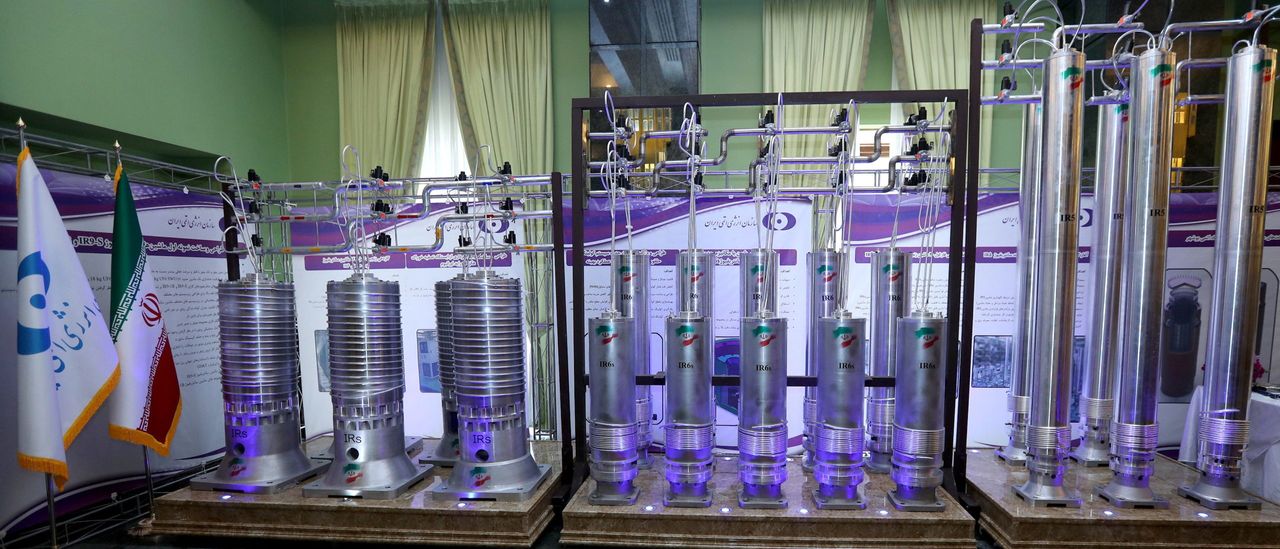Iran has begun enriching uranium to 60% purity at its fuel enrichment plant in Fordow, a year after increasing enrichment to the same level at its Natanz facility.
The Atomic Energy Organization of Iran (AEOI) announced on November 22 that “stockpiles of uranium enriched up to 60% had increased at Fordow facility,” according to the Iranian news agency ISNA.
It added that a new generation of IR-6 centrifuges had replaced older machines in Fordow to enable a massive boost in output.
Iran also installed two new IR2M and IR4 cascades at the Natanz facility, and it is preparing to inject gas into two more cascades of the same types of centrifuges, the AEOI said.
US Secretary of State Antony Blinken said on November 22 that he could not confirm whether Iran has begun refining uranium to 60% at the Fordow site.
The move came in response to the recent resolution adopted by the UN nuclear watchdog, the International Atomic Energy Agency (IAEA)’s Board of Governors, urging Tehran to cooperate with the agency's probe into the origin of uranium traces found at three old but undeclared sites.
The IAEA’s resolution adopted on November 17 was put forward by the US and E3 (France, Germany, and Britain). The resolution said that it was "essential and urgent" for Tehran to provide an explanation for traces of uranium found at three undeclared sites in Iran, and give the UN agency all the answers it requires.
According to the IAEA, Iran has failed to provide technically credible answers to its questions. Iran maintains that its nuclear program is peaceful, rejects the IAEA's assertion and accuses the agency of caving to Western and Israeli pressure.
On November 21, Iranian Foreign Ministry Spokesman Nasser Kanaani referred to Iran’s response to the resolution, saying that “at the first stage Tehran has put a few measures on the agenda of the AEOI that were implemented on November 20, at the enrichment sites of Ahmadi Roshan (in Natanz) and Alimohammadi (in Fordow) with the IAEA inspectors in attendance.”
This June, Iran removed IAEA’s monitoring equipment, including 27 surveillance cameras at several nuclear sites following the IAEA's resolution calling for Tehran to "fulfil its legal obligations".
In April 2021, Iran confirmed that the level of uranium enrichment at the Natanz nuclear site has reached 60%. The Iranian government decided to install advanced centrifuges and increase uranium enrichment to 60% purity in retaliation for the April 11 attack against its Natanz nuclear facility. Now, supplies of the radioactive metal held in at least two facilities - Fordow and Natanz - are closer to weapons-grade 90% purity.
Mohammad Eslami, the head of the Atomic Energy Organisation of Iran (AEOI), said on November 20 that the passage of a resolution critical of Iran at IAEA will be met with a "firm response".
Eslami said that Iran's nuclear program would continue in accordance with the "Strategic Measure for Lifting Sanctions", which was passed in late 2020, and demanded the paring back of Iran's adherence to its commitments under the 2015 nuclear deal (JCPOA), which had become largely non-operational after the US withdrawal in May 2018. The US then re-imposed sanctions, and Tehran backed away from its part of the deal in response. Before the deal, Iran's uranium enrichment had been at 20% purity. The deal capped it at 3.67%.







 President Ilham Aliyev shed light on the evolving contours of the peace process with Armenia during an international conference in Baku this week. ...
President Ilham Aliyev shed light on the evolving contours of the peace process with Armenia during an international conference in Baku this week. ...
 Azerbaijan and Armenia started the process of demarcation of their border on Tuesday, with the installation of the first border markers based on ge...
Azerbaijan and Armenia started the process of demarcation of their border on Tuesday, with the installation of the first border markers based on ge...
 Armenian sappers commenced on Monday mine-clearance operations in the territories adjacent to the Saint Mary Church in village of Voskepar (Armenia...
Armenian sappers commenced on Monday mine-clearance operations in the territories adjacent to the Saint Mary Church in village of Voskepar (Armenia...
 Iran and Pakistan have signed eight cooperation documents in various fields, and agreed to strengthen ties to fight terrorism in the region.
Iran and Pakistan have signed eight cooperation documents in various fields, and agreed to strengthen ties to fight terrorism in the region.
 As the conflict between Ukraine and Russia escalates, the strategic importance of Kharkiv, Ukraine's second-largest city, has come sharply into focus.
As the conflict between Ukraine and Russia escalates, the strategic importance of Kharkiv, Ukraine's second-largest city, has come sharply into focus.
 President Aliyev emphasized the critical role of the North-South Transport Corridor in fostering transport cooperation between Azerbaijan and Russi...
President Aliyev emphasized the critical role of the North-South Transport Corridor in fostering transport cooperation between Azerbaijan and Russi...



